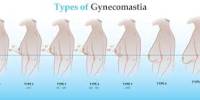A team of scientists has created a simulation of COVID-19 transmission within an isolation chamber at the Royal Brompton Hospital in London, United Kingdom. Their objective was to investigate the ideal room arrangement for lowering the risk of infection for medical personnel.
In order to do this, scientists simulated the 3D spatial dispersion of the virus within the room using an adaptive mesh finite-element computational fluid dynamics model based on data gathered from the room during a COVID-19 patient’s stay.
Wu et al. present their findings and recommendations for isolation rooms in Physics of Fluids from AIP Publishing. They focus on the patient’s bed’s placement, the air extractor’s (room’s air outlet) location and filtration rates, and the health and safety of the hospital employees who are working nearby.
“We modeled the virus transport and spreading processes and considered the effect of the temperature and humidity on the virus decay,” said Fangxin Fang, of Imperial College London. “We also modeled fluid and turbulence dynamics in our study, and explored the spatial distribution of virus, velocity field, and humidity under different air exchange rates and extractor locations.”
They showed that the COVID-19 virus is most prevalent between 0.7 and 2 meters above a patient’s bed, where there is a higher chance of infection. After the virus leaves the patient’s mouth, it is propelled vertically by the room’s buoyancy and wind pressures.
We modeled the virus transport and spreading processes and considered the effect of the temperature and humidity on the virus decay. We also modeled fluid and turbulence dynamics in our study, and explored the spatial distribution of virus, velocity field, and humidity under different air exchange rates and extractor locations.
Fangxin Fang
According to the team’s findings, a ceiling extractor with a 10 air change per hour air exchange rate is the best configuration for an isolation room to reduce the risk of infection.
The researchers note that because droplet evaporation and particle matters were not included in the study, which was constrained in terms of its numerical results and centered on an isolation room within a hospital.
The team is now preparing models of a typical hospital patient room, intensive care unit, and waiting area to incorporate evaporation and particle dynamics.
“Further work will also focus on artificial intelligence-based surrogate modeling for rapid simulations, uncertainty analysis, and optimal control of ventilation systems as well as efficient energy use,” said Fang.
















